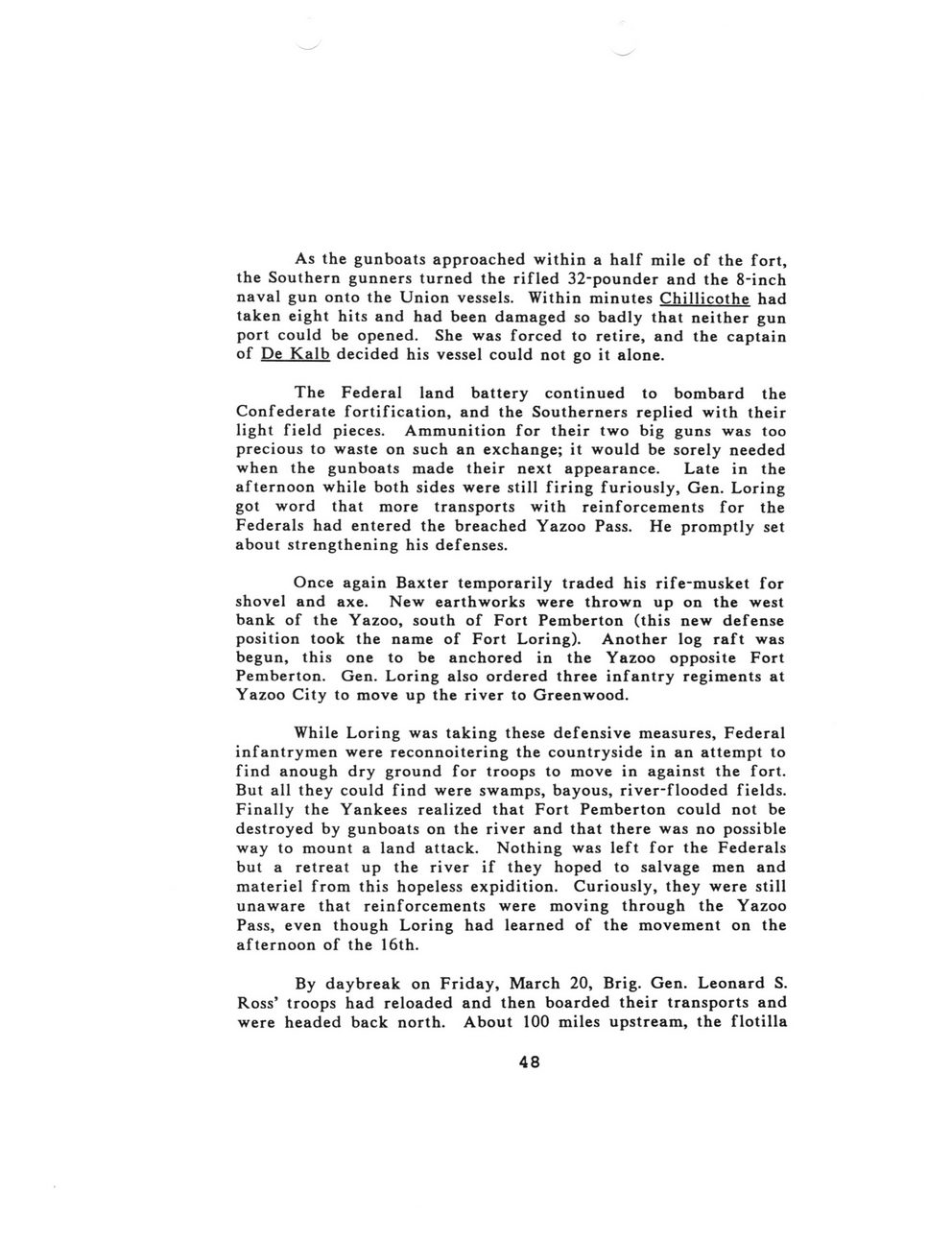This text was obtained via automated optical character recognition.
It has not been edited and may therefore contain several errors.
As the gunboats approached within a half mile of the fort, the Southern gunners turned the rifled 32-pounder and the 8-inch naval gun onto the Union vessels. Within minutes Chillicothe had taken eight hits and had been damaged so badly that neither gun port could be opened. She was forced to retire, and the captain of De Kalb decided his vessel could not go it alone. The Federal land battery continued to bombard the Confederate fortification, and the Southerners replied with their light field pieces. Ammunition for their two big guns was too precious to waste on such an exchange; it would be sorely needed when the gunboats made their next appearance. Late in the afternoon while both sides were still firing furiously, Gen. Loring got word that more transports with reinforcements for the Federals had entered the breached Yazoo Pass. He promptly set about strengthening his defenses. Once again Baxter temporarily traded his rife-musket for shovel and axe. New earthworks were thrown up on the west bank of the Yazoo, south of Fort Pemberton (this new defense position took the name of Fort Loring). Another log raft was begun, this one to be anchored in the Yazoo opposite Fort Pemberton. Gen. Loring also ordered three infantry regiments at Yazoo City to move up the river to Greenwood. While Loring was taking these defensive measures, Federal infantrymen were reconnoitering the countryside in an attempt to find anough dry ground for troops to move in against the fort. But all they could find were swamps, bayous, river-flooded fields. Finally the Yankees realized that Fort Pemberton could not be destroyed by gunboats on the river and that there was no possible way to mount a land attack. Nothing was left for the Federals but a retreat up the river if they hoped to salvage men and materiel from this hopeless expidition. Curiously, they were still unaware that reinforcements were moving through the Yazoo Pass, even though Loring had learned of the movement on the afternoon of the 16th. By daybreak on Friday, March 20, Brig. Gen. Leonard S. Ross? troops had reloaded and then boarded their transports and were headed back north. About 100 miles upstream, the flotilla 48

Baxter, Marion Francis Marion-Francis-Baxter-Bio.-048